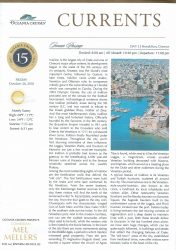|
イラクリオンは、クレタ島で最大の都市で、ギリシャの主要な都市のひとつです。その発展は9世紀初めに始まりました(古代では、クノッソスは島の最も重要な中心であり、ゴーティンが続いています)。その後、イラクリオンは イスラム帝国、ベネチア共和国、オスマン帝国の支配下に入りました。その征服者は当初ハンダクかハンダクという名前を与え、それがカンディアに変わりました。 2004年のオリンピックでは、イラクリオン市がサッカー競技場を提供しました。考古学的な証拠によると、イラクリオンはおそらく、前9世紀、ゼウスの母、レアというギリシャの女神に敬意を表して命名されたものです。ほとんどの地中海都市と同様に、イラクリオンは長くて激動のある歴史があります。9世紀にサラセン人が正式に設立、961年、ビザンチン帝国はクレタ島に侵入し、1211年にはベネチア人にこの島を売却しました。わずか1000個の銀貨のためでした。イラクリオンはついにベネチア人の下で栄えました。市内全域で、ロッジア、ベネチアの壁、そしてモロシニの噴水などの記念物を見つけることができます。しかし、おそらくイラクリオンはクノッソス の4000年前の息を呑む美しいミノア遺跡とラシティ高原(Lassithi Plateau)に広がる有名な風車の玄関口として知られています。 |
| Iraklion is the largest city of Crete and one of Greece’s major urban centers. Its development begun in the wake of the 9th century AD (in antiquity, Knossos was the island’s most important centre, followed by Gortyn). In later times, Iraklion came under Arabic, Venetian and Ottoman rule; its conquerors initially gave it the name Khandaq or Handak, which was corrupted to Candia. During the 2004 0lympic Games, the city of Iraklion provided one of the venues for the football tournament. Archaeological evidence shows that Iraklion probably arose during the 9th century B.C. and was named in tribute to the Greek goddess Rhea, mother of Zeus. And like most Mediterranean cities, Iraklion has a long and turbulent history. Officially founded by the Saracens in the 9th century, the Byzantine Empire invaded in 961 only to lose control to the Crusaders who sold Crete to the Venetians in 1211 for a thousand silver coins. Iraklion finally flourished under the Venetians. Throughout the city you’ll find stunning reminders of their influences the Loggia, Venetian Walls, and Fountain of Morosini are just a few must-see examples. But Iraklion is probably best known as the gateway to the breathtaking 4,000 year-old Minoan ruins at Knossos and to the famous windmills stretched across the Lassithi Plateau. Among the most outstanding sights of Iraklion are the fortification walls that delimit the “old city”. The first fortifications were built by the Arabs and were later reinforced by the Venetians. From the seven bastions, only the Martinengo bastion survives to this day; there visitors will find the tomb of the renowned writer N Kazantzakis, overlooking the city. From the four gates to the city, only Chanioporta with the characteristic winged Lion of Saint Marc and the New Gate (1587) at the southern side survive today. In the old (Venetian) port, next to the modern facilities, one can see the vaulted tarsanades where ships used to be built, while the westem side is dominated by the Koule fortress. In the heart of the city there are many monurnents dating to the Middle Ages, a period in which Iraklion witnessed great prosperity. From the port, ascending 25 Avgoustou (August) street, one reaches a square where the church of Agios Titos is found, while next to it lies the Venetian Loggia, a magnificent, ornate arcaded Venetian building decorated with blazons, and trophies which served as a meeting Place for the Duke and other noblemen during the Venetian period. A typical feature of Iraklion is its Venetian and Turkish fountains, scattered all around the city. The most famous one is the Venetian style orozini-fountain, also known as the Lions, a landmark for local inhabitants and visitors alike. Other noteworthy Venetian fountains are the Bembo fountain on Kornaros Square, the Sagredo fountain built in the northwestern corner of the Loggia, and Priuli fountain located near the port. Iraklion today is living between the fast moving currents of regeneration and a deep desire to maintain links with a past. Both these strands define its character. ln the last hundred years alone, we have seen huge changes which can be quite easily followed, in buildings and streets that reflect the changing fortunes of Crete. The “old town” areas of the city, established from mediaeval times, now offer visitors some fantastic walks in the heart of the city. |
